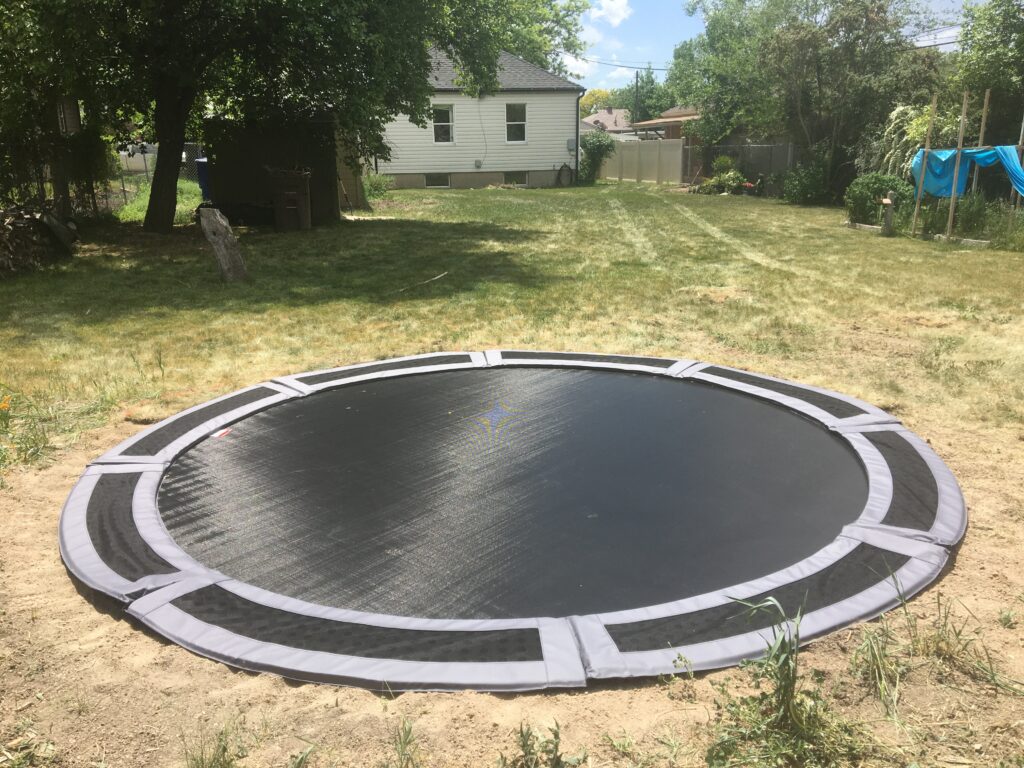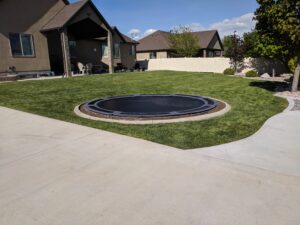Retaining Walls for In Ground Trampolines
When installing an in-ground or sunken trampoline, you will need a retaining wall to make the most of your new kit. If you’re not sure what a retaining wall is, or why you need one, here are some common questions and answers to help you out.
What Is a Trampoline Retaining Wall?
If you’re sinking a trampoline or installing one at ground level, you will also need to install a retaining wall. The retaining walls are generally made of plastic or steel panels, attach to the trampoline frame and line the inside of the excavated hole. As well as reinforcing the perimeter of the pit to stop it collapsing, the retaining wall also makes it easy to maintain your yard around the in-ground trampoline by enabling e.g. grass mowing right up to the mat.
Why Do I Need Retaining Walls for an In-Ground Trampoline?
Retaining wall kits offer safety, aesthetic and longevity benefits for your trampoline and your yard. When you dig out the trampoline pit, it’s important to stop the surrounding earth and dirt from caving in under your bouncing surface. Not only does a retaining wall stop this from happening, it also maintains the integrity of the surface around the trampoline, enabling you to landscape and walk around without worrying about loose or crumbling soil.
With a traditional above-ground trampoline, it may be difficult or too much of a hassle to maintain or cut any grass underneath it which can lead to an untidy looking yard. Because you can mow or cut your lawn right up to the edge of the in-ground trampoline, a retaining wall does not impact the look of your grass.
The retaining wall also protects the in-ground trampoline as a whole as it prevents damage from rocks, soil and debris. A sturdy wall that’s installed with your in-ground trampoline means that no excavation will be necessary again in the future to clear out collapsed earth that might be affecting your bouncing.
How Much Does a Trampoline Retaining Wall Cost?
Some in-ground trampolines come as a bundle with the retaining wall set-up included. If you’re getting them separately, there are a few factors involved in working out how much a retaining wall for your trampoline might cost:
- Material
- Size
- Installation
Retaining wall kits can be made of lightweight, flexible plastic, polyethylene or synthetic panels which are easy to install and may be more cost effective. More durable, longer-lasting kits will be made from steel panels and may be more expensive. If you go for a DIY option, there are a variety of other materials you can use, such as concrete blocks or bricks.
The size of the pit will also factor into the cost of the retaining walls as a larger hole will require more panels.
Some in-ground retaining walls require professional installation which will add to the cost, although it should also ensure a great service. It is possible to install most retaining walls yourself, although it’s usually easier with two people.
What Goes Around an In-Ground Trampoline?
Now that your trampoline is in the hole, what do you need to put around it? Experts recommend that you should have an area of at least 3 feet around the trampoline for a safety zone, and make sure it’s not too close to fencing, walls or other garden features.
Usually, vented pads are added around the perimeter of the bounce mat to allow more airflow for better bouncing, and to provide a softer landing surface if you miss the mat. You can also dig further out from the mat and fill the area with sand, woodchips, or bark or rubber mulch for an extra-absorbent emergency landing surface.
Other accessories, such as a trampoline net, can also go around the in-ground trampoline, ensuring a safe bouncing experience for all. While this will negate the seamless aesthetic of a sunken trampoline, it may be worth it for the peace of mind it will bring to families with young children.


